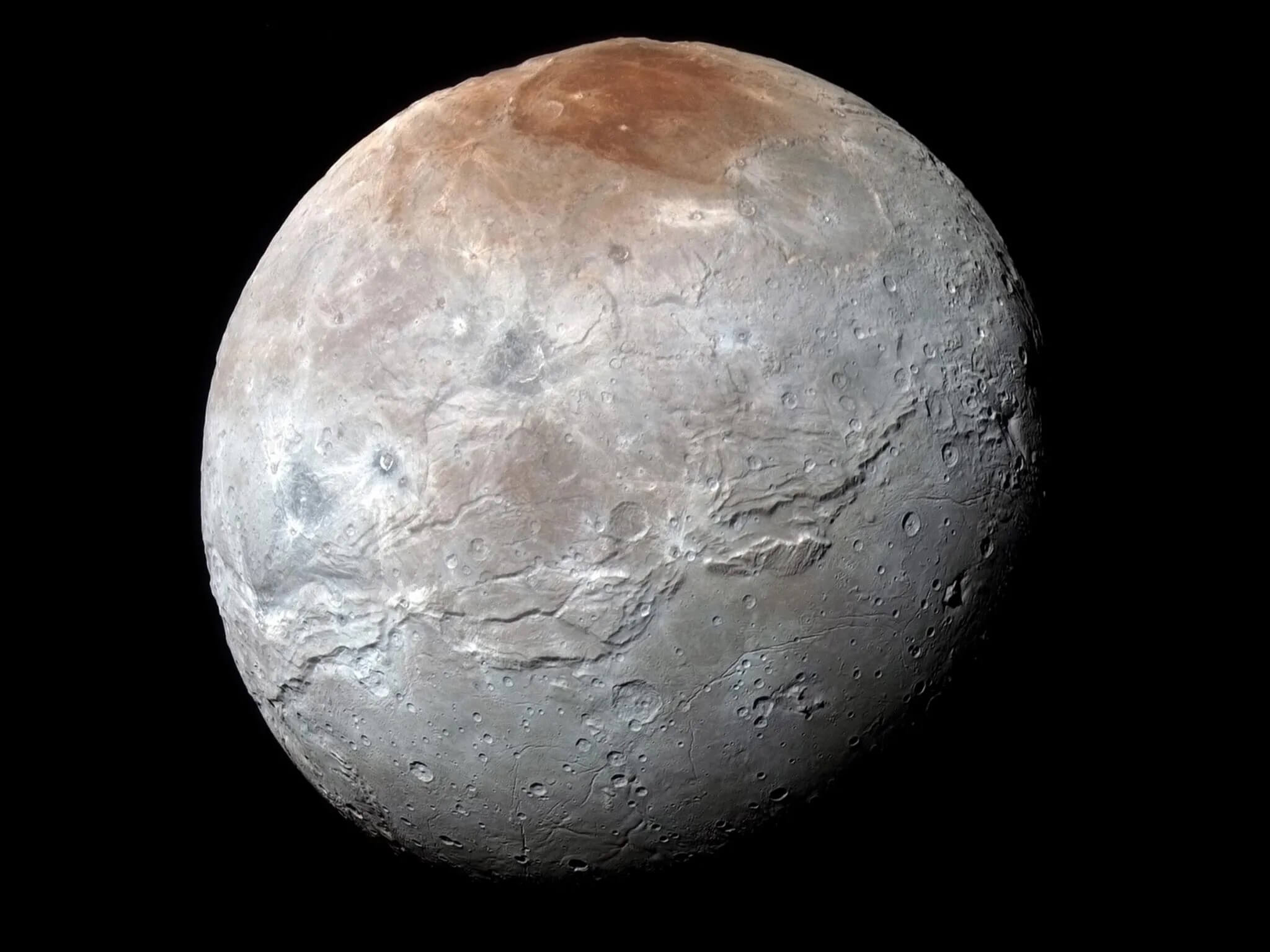In addition to all the fascinating landforms discovered on Pluto's surface, the flyby discovered an unusual shape on Charon, a surprising red dome centered on its north pole. Scientists conducted an experiment that simulated the processes in Charon's thin atmosphere

Scientists at the Southwest Research Institute (SwRI) combined data from NASA's New Horizons mission with highly advanced laboratory experiments and exospheric modeling to discover the likely composition of the red dome on Pluto's moon Charon and how it may have formed. This first-ever description of Charon's dynamic methane atmosphere using new data provides a fascinating glimpse into the origin of this moon's red spot as described in two new papers.
Charon is the largest moon of Pluto, and is the largest known satellite relative to its parent body. Charon orbits Pluto every 6.4 Earth days. James Christie and Robert Harrington discovered Charon in 1978 at the US Naval Observatory in Flagstaff, Arizona.
"Before New Horizons, the best images of Pluto from Hubble revealed only a faint patch of reflected light," said Randy Gladstone of SwRI, a member of the New Horizons science team. "In addition to all the fascinating landforms discovered on Pluto's surface, the fly discovered an unusual shape on Charon, a surprising red dome centered on its north pole."
Shortly after the 2015 encounter, the New Horizons scientists suggested that a reddish "tholin-like" substance at Charon's pole might be synthesized by UV light breaking down methane molecules. These are trapped after leaking from Pluto and then frozen in the polar regions of the moon during their long winter nights. Thulines are sticky organic residues formed by chemical reactions triggered by light, in this case the UV Lyman-alpha glow scattered by interplanetary hydrogen atoms.
"Our findings suggest that drastic seasonal fluctuations in Charon's thin atmosphere, as well as light breaking up the condensing methane frost, are key to understanding the origin of Charon's red polar region," said SwRI's Dr. Ujwal Raut, lead author of the paper. called Charon's Refractory Factory in the journal Science Advances. "This is one of the most tangible and powerful examples of atmosphere-surface interactions observed so far in a planetary body."
The team realistically replicated conditions on Charon's surface at SwRI to measure the composition and color of hydrocarbons formed in Charon's winter hemisphere when methane freezes under the Lyman-alpha glow. The team fed the measurements into a new atmospheric model of Charon to show methane decaying into a residue at Charon's north pole point.
"Our team's innovative 'dynamic photolysis' experiments have provided new frontiers for the contribution of interplanetary Lyman-alpha to the synthesis of Charon's red matter," Raut said. "Our experiment condensed methane in an ultra-high vacuum chamber under exposure to Lyman-alpha photons to reproduce with great precision the conditions at the poles of Charos."
The SwRI scientists also developed a new computer simulation to model Charon's thin methane atmosphere.
"The model indicates seasonal 'burst' pulses in Charon's atmosphere due to extreme changes in conditions over Pluto's long journey around the Sun," said Dr. Ben Toulis, lead author of a related paper titled Extreme Exospheric Dynamics at Charon: Implications for the Red Spot in the journal Geophysical Research Letters.

One response
Red Riding Hood on Charon? He is probably Jewish.